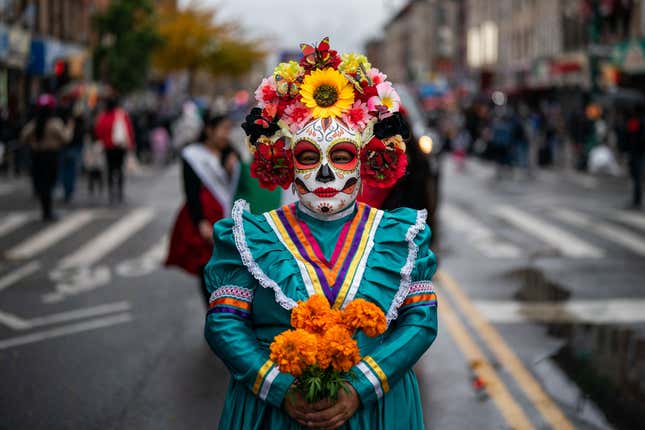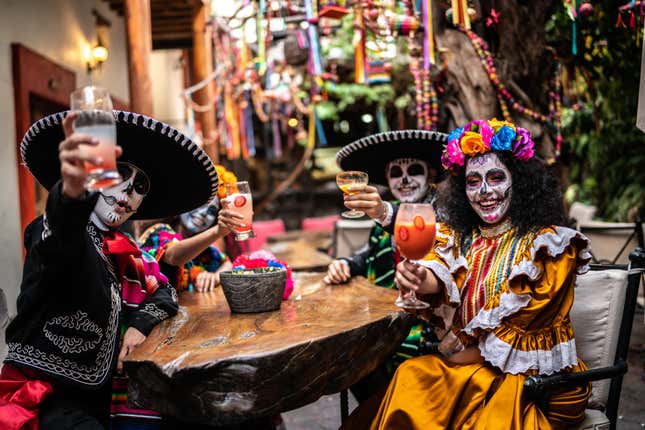
This past year has been a lot.
Aside from the usual bouts of burnout, wavering self-esteem, and crippling social anxiety—shoutout to Lexapro for helping to keep me sane—there’s been death.
A lot of it.
Yes, as an Operation Enduring Freedom veteran, this entire Isreal-Palestine conflict genocide has been incredibly triggering, but there’s been an equal amount of profound loss within my immediate circle. Disease and tragedy have pillaged one life after another—close friends, my courageous childhood pastor, even a potential mother-in-law—and in always being tasked with being “the strong friend,” that means discarding my own emotions in order to provide a refuge for everyone else.
It sure as hell ain’t easy, but sadly, it’s all I’ve ever known.
Thankfully, an unexpected visit to Hacienda Patrón’s Día de los Muertos celebration provided me with the much-needed opportunity to finally grieve. For those of you not of Mexican descent (or who could use a bit of cultural competency), Día de los Muertos—or Day of the Dead if you didn’t pay attention in Spanish class—is a Mexican holiday that, in living up to its namesake, allows grieving friends and family to collectively honor their deceased loved ones. However, unlike the somber funerals we’re accustomed to in America, Día de los Muertos—which is traditionally celebrated at the beginning of November—is a time for celebration. In fact, the deceased are actually guests of honor, with attendees celebrating the memories of those near and dear to their hearts.

Of additional note, skulls—or calaveras—are a prominent symbol throughout the festivities. Skulls made of sugar are offered as gifts to both the living and dead, while celebrants adorn themselves in skull-themed makeup, costumes, and masks. But aside from the calaveras, and an opulent feast that included escamoles, pork stew, and tejuino—a fermented corn drink—the night also included an elaborate costume contest for the nearly 5,000 people in attendance. In addition to altars—or ofrendas—comprised of pictures, favorite foods, and other memorabilia to commemorate the dearly departed.
Nothing about this environment felt familiar—the children climbing through wafts of smoke like a jungle gym, the giggling matriarchs huddled around ofrendas—but this being a form of grief I’d never experienced before, I decided to tap into the unbridled joy that surrounded me and honored the memories of those I hold dear—including those I had lost beyond the past year.
I laughed out loud thinking about Serg’s obsession with Buffalo Wild Wings’ boneless wings. I sipped piña coladas with Marcus as we basked in the Cabo sunset one last time. I told Reek how proud of him we all were. I even played Mariah’s “All I Want for Christmas Is You” so Rosie could share one last laugh with the daughter whose life will never be the same in her absence.
Then, once I escaped my thoughts and returned to my worldly flesh, I put dirt in my hands and expressed my gratitude to the indigenous ancestors who had not only tended to that sacred land for thousands of years, but who had allowed me the opportunity to finally—and cheerfully—grieve.
Día de los Muertos affords each of us the opportunity to express our anguish with joy and our heartache with glee. And now that I’ve been fortunate enough to partake in such an unforgettable experience, I can truly begin to process my pain and embrace my healing journey with a smile—all thanks to Hacienda Patrón.

